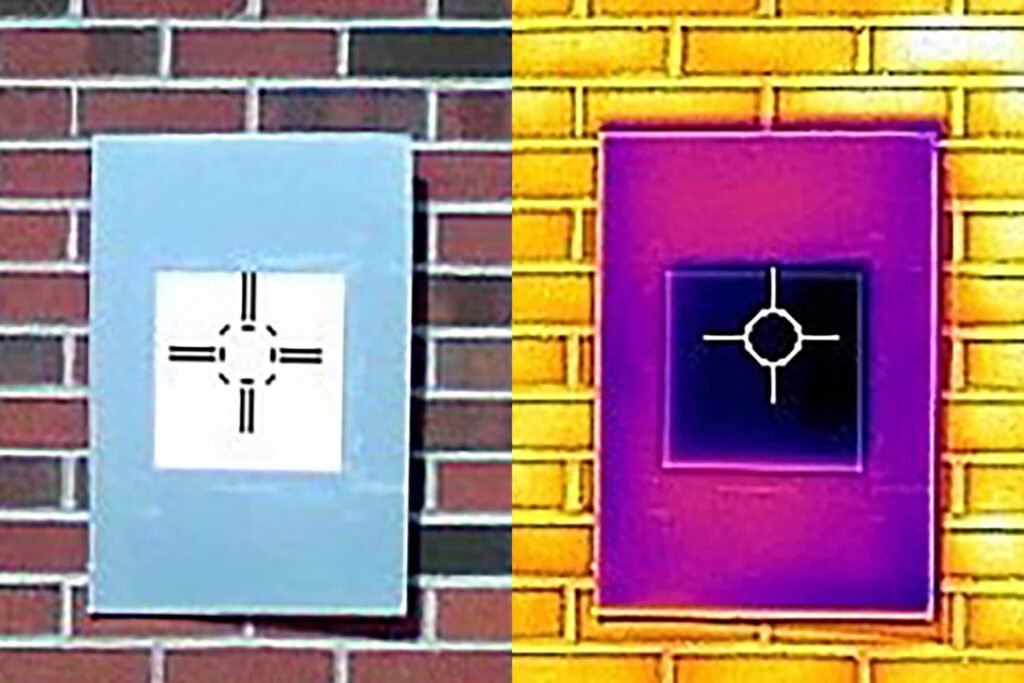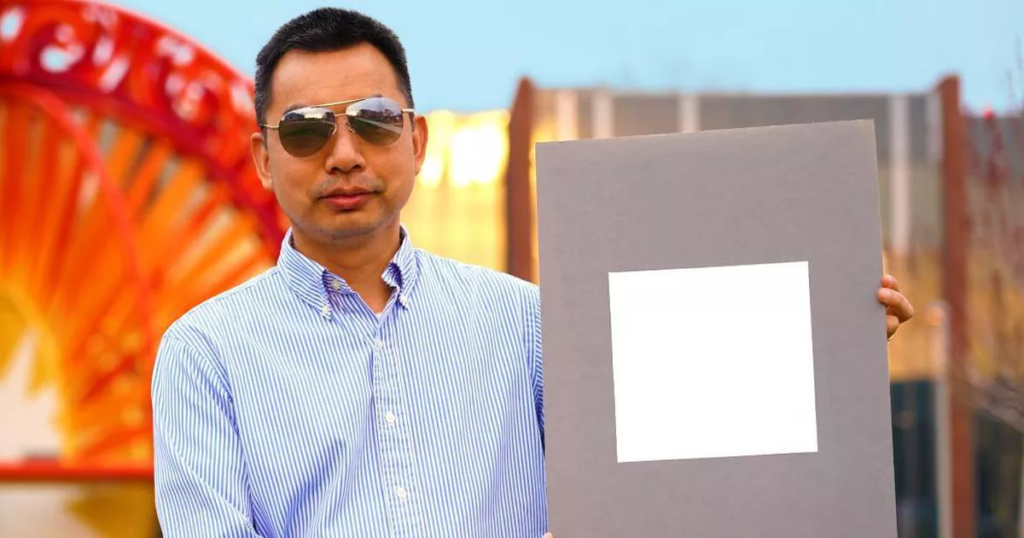Update: This new paint created by Purdue researchers has now made it to big leagues as Guinness World Records book has awarded it as the whitest paint ever made. Where paints on the market, designed specifically to reject heat, reflect only 80% to 90% of sunlight, this new paint reflects 98.1% of solar radiation while also emitting infrared heat.
Original Article: Another recipe for white paint has given us the whitest white yet. It reflects a stunning 98.1 percent of all light that hits it, remaining essentially cooler than the surrounding temperature, in any event, when sitting in full daylight.
Whenever used to cover structures, its innovators say, the paint could help in the battle against global warning by diminishing our dependence on electrically controlled cooling, a propensity that is worsening the climate crisis.
“If you somehow happened to utilize this paint to cover a rooftop space of around 1,000 square feet [92.9 square meters], we gauge that you could get a cooling force of 10 kilowatts,” said the mechanical architect Xiulin Ruan of Purdue University. “That is more remarkable than powerful than the air conditioners used by most houses.,” Ruan added.
The collaboration expands on paint they grew a year ago, which arrived at a then-record-breaking reflection rate of 95.5 percent. The new equation, the group said, carries it a lot nearer to being a genuine counterpart to Vantablack, the dark color that can absorb up to 99.965 percent of obvious light.
To build up their new paint, the scientists searched for profoundly reflective white materials. Their past paint was made of calcium carbonate particles – the substance compound found in chalk, limestone, and marble – suspended in an acrylic paint medium. For their new equation, they went to barium sulfate, happening normally as the mineral barite, and usually utilized as a color in white paint.

“We took a gander at different business items, fundamentally anything that is white,” said mechanical designer Xiangyu Li of the Massachusetts Institute of Technology, once at Purdue.
“We found that utilizing barium sulfate; you can hypothetically make things super reflective, which implies that they’re incredibly white.”
The trick is in the size and convergence of the particles. A scope of various barium sulfate molecule sizes permits the paint to dissipate the most extreme measure of light, and obviously the more barium sulfate there is the more light it can reflect. There is, nonetheless, a point where an excessive amount of barium sulfate can bargain the integrity of the paint, making it brittle and flaky when it dries.
The sweet spot, the scientists found, is a grouping of around 60% barium sulfate in the acrylic medium. During field tests, the group found that their painted surface reliably figured out how to remain cooler than the surrounding temperature by at least 4.5 degrees Celsius, accomplishing a normal cooling force of 117 watts for each square meter. It even kept up this in the dead of winter.

For examination, the group’s calcium carbonate paint had a surface temperature of more than 1.7 degrees Celsius underneath encompassing at late morning, and a cooling force of 37 watts for every square meter – so a couple of additional percent reflectivity in the barium sulfate paint had a huge effect.
In view of the restrictions of the materials, the barium sulfate paint likely can’t get significantly more reflective, yet what the group has accomplished could really improve the world. Air cooling infuses heat into Earth‘s environment in many ways, including pushing hot air out of structures, the warmth of running the machines, and the general petroleum product created power that runs them that adds to carbon dioxide discharges.
Researchers have been looking for a strategy for latent radiative cooling since the 1970s. This barium sulfate paint works, it’s reliable, and it tends to be created financially without any problem. The group has documented a patent and expectations that the paint could soon advance into basic use.
